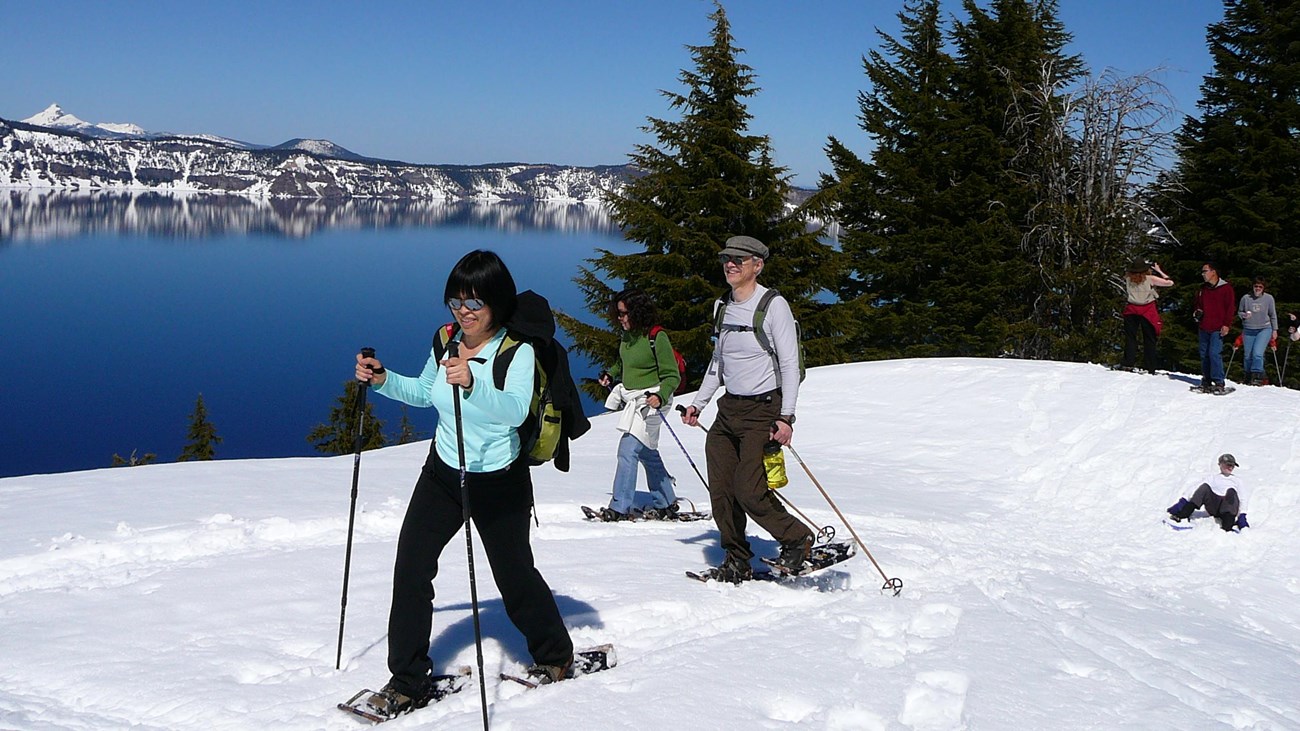Last updated: June 9, 2025
Thing to Do
Snowshoeing at Crater Lake

NPS Photo
Strapping on a pair of snowshoes is a great way to experience the changes that winter brings to Crater Lake National Park. Mounds of snowy waves cover downed trees and saplings, and forest shadows stretch across the sparkling snow. Meadows become white wonderlands. Snowshoe for a short distance or plan a full day along an established trail.
Snowshoeing is prohibited inside the caldera, and on all roads and parking lots where vehicles are allowed.
What to Know
Wearing layers of warm, waterproof clothing and footwear, staying hydrated, and having a plan increases your safety and enjoyment while snowshoeing. Limited quantities of snowshoes (no skis) are available for rent through Crater Lake Hospitality at Rim Village Gift Shop on the day of your visit. Reservations for snowshoes are not accepted. When the road to the rim is closed due to heavy snowfall, snowshoe rental is not avaialble from the gift shop, but many outfitters outside the park rent cross-country skis and/or snowshoes.
- Snow cornices form when wind blows and deposits snow ten feet or more beyond the rim of the caldera. They are difficult to see and can collapse with a few steps. Stay far away from the edge.
- A tree well is an unstable hole or depression around the base of a tree which can collapse if a skier or snowshoer gets too close.
- As a courtesy to skiers, please refrain from walking in ski tracks.
Snowshoeing Around the Lake
Each winter, approximately 80 skiers and 40 snowshoers travel all the way around Crater Lake. It’s a trip that can be exceptionally rewarding, with unforgettable views. It can also be physically and mentally demanding—a test of endurance and outdoor skills. A backcountry permit is required for entire tour.
March and April are the most popular months to complete the loop. Spring provides more hours of daylight than the winter months and longer periods of fair weather. When the weather is clear, the 31-mile (50-km) loop takes an average of 3 days to complete. Storms, however, force many parties to turn back or to spend extra nights. The route is unmarked, difficult to follow in places, and crossed by a number of avalanche paths. Those attempting the trip should be experienced in winter camping, backcountry travel, and avalanche safety.
Venturing into the backcountry requires understanding the dangers that could impact your experience. Sudden weather changers, avalanches and road closures could impact their travel plans. Backcountry users are strongly encouraged to plan for these unforeseen impacts as Emergency response could take up to 24 hours or more. More info at Winter Safety.
